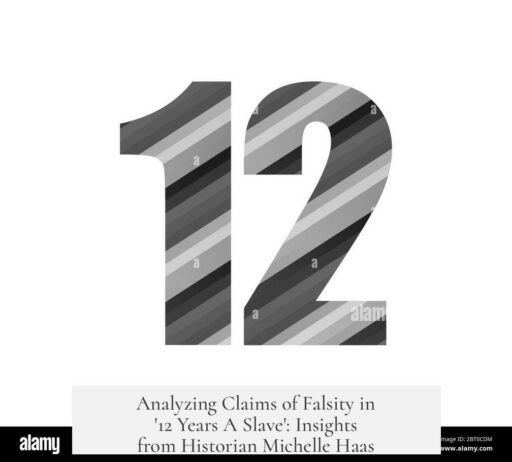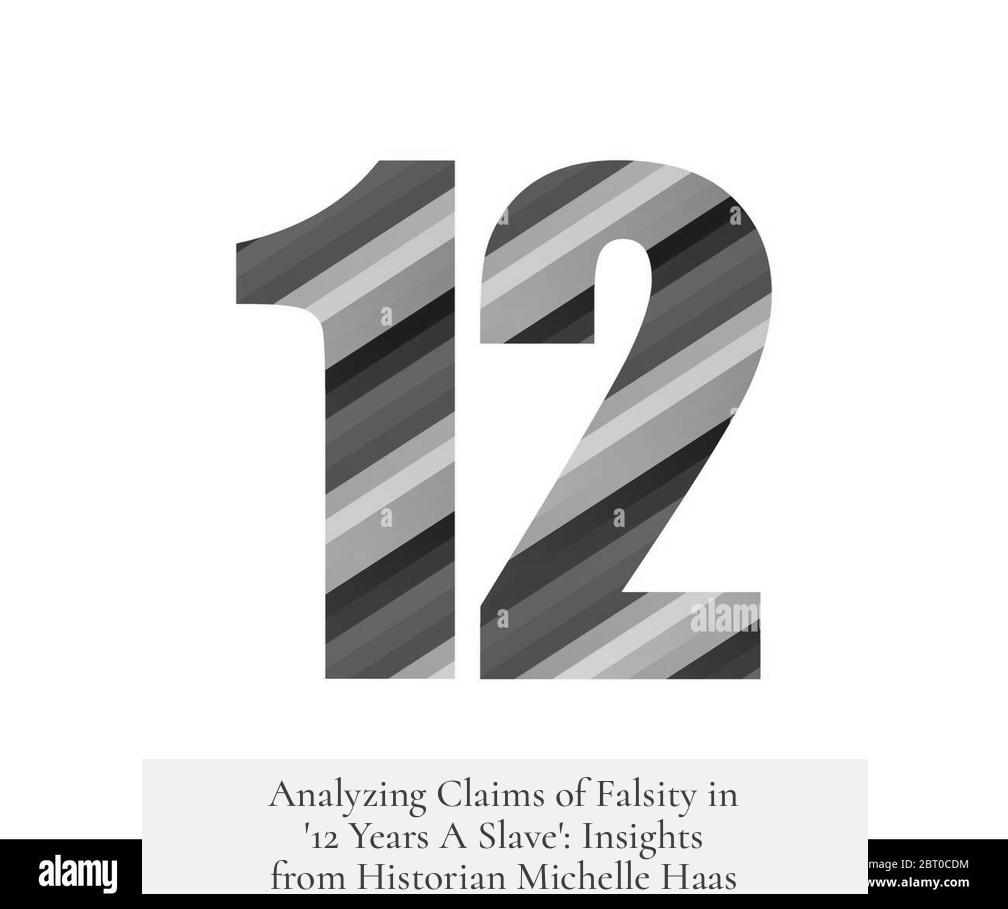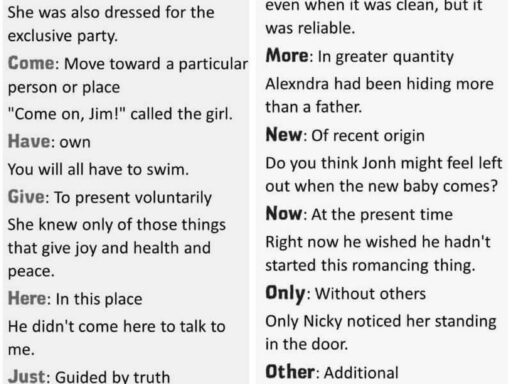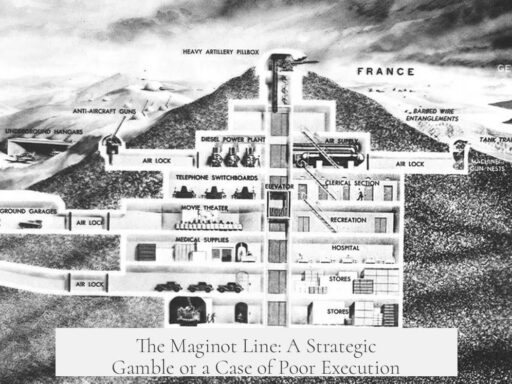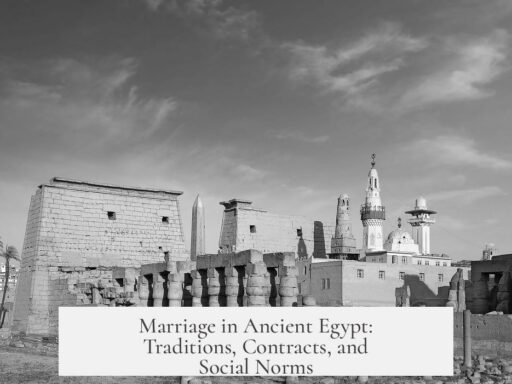It is not true that “12 Years A Slave” is mostly a fake story as claimed by historian Michelle Haas in “200 Years A Fraud.” Haas does not deny the core events of Solomon Northup’s life—that he was a free man kidnapped and enslaved for twelve years. Instead, her criticism targets the book’s ghostwritten nature and possible narrative embellishments, not the factual basis of Northup’s experience.
Solomon Northup quickly published his narrative after regaining freedom in 1853. The story’s authenticity is strongly supported by contemporaneous evidence. For example, Union soldiers documented visiting the plantation where Northup had been enslaved. Two independent letters from Union soldiers referenced Northup and confirmed the truth of his captivity. One letter by Captain Henry Devendorf stated that Northup’s story was verified by enslaved people on the plantation. Another letter by Private John Hall described the slaves’ recognition of Northup, reinforcing that the events indeed occurred.
Michelle Haas’s background casts doubt on the weight of her argument. She holds no formal academic qualifications in history and self-publishes her claims through a small local press. These factors reduce the reliability of her critique. Additionally, Haas exhibits strong ideological biases, notably opposing mainstream accounts of slavery and critical race theory. Her work does not align with the conventions of peer-reviewed historical scholarship, which demands rigorous evidence and neutrality.
Dr. Sue Eakin, a history professor at Louisiana State University, provides a more academically accepted examination of “12 Years a Slave.” In 1968, Eakin published an extensively annotated edition of the book, closely verifying the identity of people and locations mentioned. Her research validated the major factual claims, confirming that the story’s framework corresponds to historical record. She notes that while some minor details may be embellishments—likely added during the ghostwriting process—the core narrative remains accurate.
The ghostwriting process itself explains some discrepancies. David Wilson, the ghostwriter, collaborated with Northup to produce the narrative. While Wilson may have introduced dramatic flourishes or misnamed certain individuals, the fundamental events reflect Northup’s genuine experience. Ghostwriting was common in 19th-century slave narratives, which often served abolitionist goals and sometimes sacrificed strict factual detail to reach a wider audience.
David Fiske, an author specializing in Solomon Northup, confirms that Northup’s story is fundamentally truthful. Fiske’s scholarship acknowledges that while certain episodes might be distorted or exaggerated, the overall account of kidnapping, enslavement, and escape is genuine. Northup’s narrative withstands extensive verification, including social and economic details consistent with Louisiana plantations in the 1840s. Fiske provides a modern biographical perspective, filling gaps left by the original narrative and confirming Northup’s historical presence through legal and census records.
| Source | Key Contribution |
|---|---|
| Solomon Northup (1853) | First-person account of kidnapping and slavery |
| Union Soldier Letters (1863) | Contemporary corroboration of Northup’s captivity |
| Dr. Sue Eakin (1968) | Verified names, places, and historical context; annotated edition |
| David Fiske (21st Century) | Modern biography confirming story’s authenticity and societal context |
| Michelle Haas (2022) | Questions literary construction and ghostwriting; ideological critique |
In sum, “12 Years A Slave” stands as a true account rooted in verifiable historical events. Challenges to its authenticity focus on narrative embellishment rather than wholesale fabrication. Both primary evidence and scholarly research confirm Solomon Northup’s remarkable story.
- Northup’s kidnapping, enslavement, and escape are historically authenticated facts.
- Letters from Union soldiers verify Northup’s existence and story during the Civil War.
- Dr. Sue Eakin’s scholarly work provides detailed validation of book’s people and places.
- Ghostwriting explains dramatization, but not falsehood of core experience.
- Michelle Haas offers ideological critique lacking academic rigor and broad acceptance.
Is It True That ‘12 Years A Slave’ Is Mostly a Fake Story as Claimed by Historian Michelle Haas in “200 Years A Fraud”?

Here’s the quick answer: No, “12 Years A Slave” is not mostly a fake story as Michelle Haas claims. But, like any juicy historical narrative, it’s got layers worth peeling back. Let’s dive into the reality behind Haas’ accusations, the evidence upholding Solomon Northup’s story, and why smart readers should take some claims with a giant grain of salt.
So, who’s Michelle Haas anyway, and why is her book titled 200 Years A Fraud throwing shade on such a powerful narrative? More on that in a moment.
Who Is Michelle Haas and Why Should We Listen to Her?
Michelle Haas isn’t exactly a name echoed in academic halls of history. She lacks formal academic credentials in history or related fields, and her book is published by a small local press she helps run. This means:
- No peer review, which is the gold standard for trustworthy historical work.
- Potential editorial bias, since she wears both author and publisher hats.
And she’s known for railing against mainstream academic views, especially criticizing Critical Race Theory and what she calls “revisionist” history around slavery in Texas. It’s fair to say Haas approaches Northup’s story with a political lens that questions the severity or interpretation of slavery’s horrors rather than the basic facts.
So, Haas seems more a maverick contrarian than a fact-checking historian.
What Does Haas Actually Claim?
Contrary to what some headlines might suggest, Haas does not deny that Solomon Northup was kidnapped and enslaved for twelve years. She accepts these core events. Her beef is with the 1853 book itself, which she suggests might contain embellished or fabricated details because it was ghostwritten by David Wilson.
“Yes, Dr. Sue Eakin spent a lifetime verifying that most of the people and places named in the book were real, but that doesn’t make the story built around the armature of those names and places real.” — Haas
In other words, Haas argues the skeleton of the story is real, but some meat on those bones might be fictionalized or dramatized for effect.
Why This Might Not Be Such a Wild Claim
Let’s get real: 12 Years A Slave is a classic example of a 19th-century “slave narrative,” a genre often embroidered by ghostwriters. Almost no such narratives were penned entirely by the enslaved persons themselves. Editors or ghostwriters usually added dramatic flair to evoke sympathy and support the abolitionist cause.
- David Wilson interviewed Northup and shaped the final manuscript.
- Some events, names, and descriptions might have been amplified, omitted, or even invented to suit readers and activists of that era.
- For instance, claims of “around-the-clock whippings” mentioned in Chapter 12 have been judged by scholars as potential dramatic exaggerations.
This doesn’t mean the story’s foundation is false. It’s more about understanding the narrative context.
Here’s What Keeps ‘12 Years A Slave’ Rock Solid
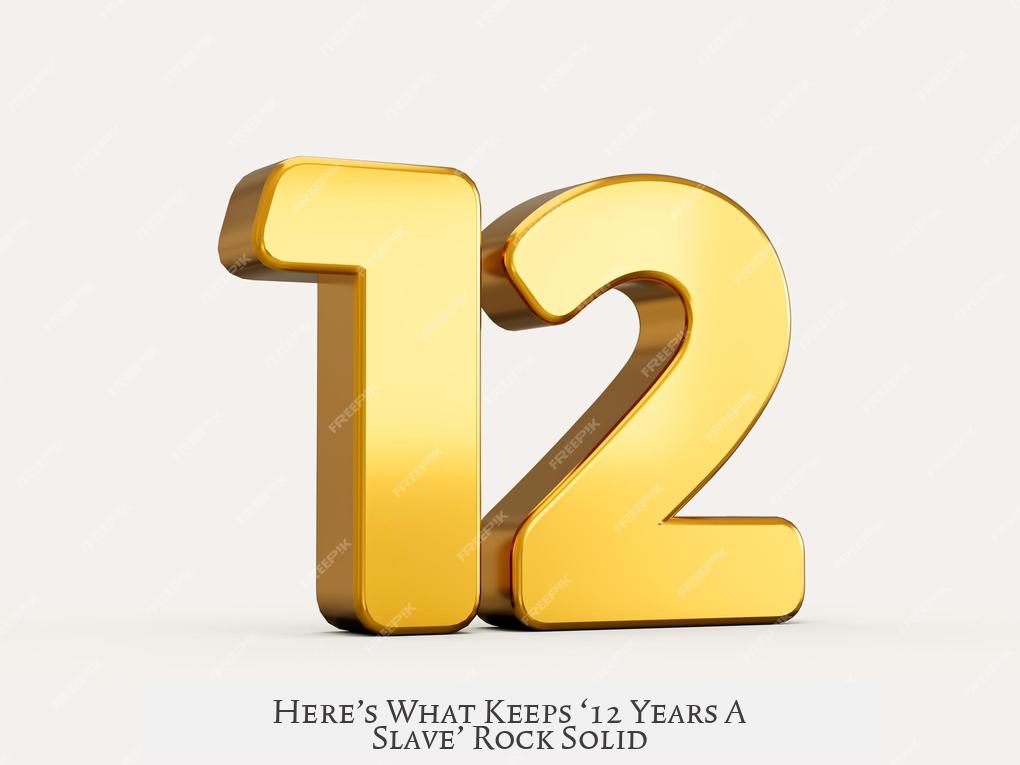
But don’t let the ghostwriter talk fool you. Independent verification and scholarly research give Solomon Northup’s story a firm factual backbone:
- Letters from Union soldiers who arrived at the plantation confirmed Northup’s presence and identity under slavery.
- Court records and census data support the existence and activities of the people and places Northup named.
- Dr. Sue Eakin, a history professor at Louisiana State University, dedicated decades to investigating every name, place, and event in the book.
Eakin’s edited 1968 edition of 12 Years A Slave added roughly 80 pages of explanatory notes that verify the majority of details while contextualizing minor inaccuracies.
“The basic facts of Solomon’s journey to Louisiana and his movement through the Bayou Boeuf plantation country have been validated,” said Dr. Eakin.
In plain terms, she proved the skeletal framework and most flesh on that framework are authentic.
The Scholarship of David Fiske: A Modern Lens on Northup’s Life
David Fiske further expands on Northup’s life and legacy with his books, including Solomon Northup: The Complete Story of the Author of Twelve Years a Slave. Fiske confirms key points:
- Northup was really kidnapped, enslaved, and lived through the hardships described.
- He correctly identified his captors and owners by real names.
- The story’s descriptions of plantations, people, and daily life hold up under modern historical scrutiny.
At the same time, Fiske acknowledges that some minor details could be embellishments, but the overall narrative comes from someone who genuinely experienced those events.
What Does This Mean for Readers?
The takeaway here isn’t that the story is “fake,” but that it’s a product of its time—mixing personal testimony with the dramatic writing style popular in abolitionist literature.
Think of it like watching a historical movie that’s “based on a true story.” The main plot and characters remain the same, but some scenes are added or adjusted to convey emotion, drama, or political punch.
This is common and understandable. The dangers emerge when one either blindly accepts every detail as literal fact or wholly dismisses the work as fraudulent. Neither extreme helps us understand the past.
Does It Matter That the Book Was Ghostwritten?
Yes and no.
Yes, it reminds us to be cautious about treating “12 Years A Slave” as a verbatim autobiography. The ghostwriter, David Wilson, likely shaped or enhanced portions to serve abolitionist aims.
No, because having a ghostwriter doesn’t erase Solomon Northup’s lived experience. He provided the essential story and personal insight. Wilson just helped polish the manuscript.
So, the core memories and events belong to Northup, even if the storytelling had some editorial flair.
What About Haas’ Larger Argument in ‘200 Years A Fraud’?
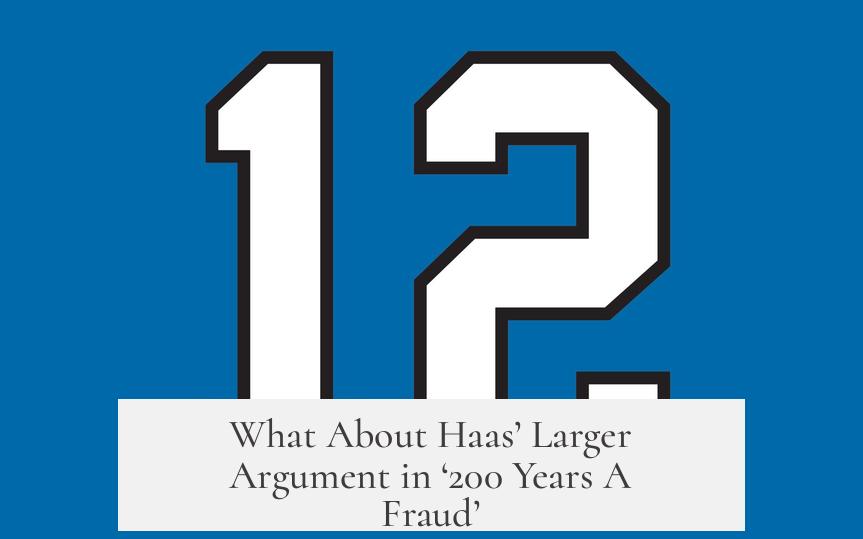
Haas’s book attempts a broad challenge of modern historical narratives, particularly around slavery, in Texas and the U.S. She critiques mainstream historians and topics like Critical Race Theory, positioning herself as a revisionist voice.
However, her lack of formal history training, combined with ideological bias and self-publishing limitations, severely undercuts her credibility. Simply put, her claims don’t stand up well to established historical evidence.
It’s a classic case of the “outsider challenging the experts”, but without robust evidence or scholarly validation, her work remains fringe.
So, What’s the Bottom Line About ‘12 Years a Slave’?
- The core experience of Solomon Northup—being kidnapped and enslaved for twelve years—is overwhelmingly supported by historical evidence.
- Letters from Union soldiers in 1863, legal documents, and census information lend strong independent support.
- Dr. Sue Eakin’s detailed research verified the accuracy of people and places mentioned.
- David Fiske’s scholarship confirms the fundamental truth of Northup’s story, with honest acknowledgment of some minor literary embellishments.
- Michelle Haas’ critique centers more on the literary construction of the book, not a denial of Northup’s lived reality.
- Her ideological stance and lack of rigorous academic grounding make her sweeping claims unreliable.
Final Thoughts: How to Read ‘12 Years A Slave’ Today
“12 Years A Slave” remains a vital, moving, and historically significant narrative. It offers a personal window into one man’s courage and resilience amid a brutal system. By appreciating the context of its creation, readers can respect both its historical foundation and literary shaping.
Maybe the better question to ask is: what does this story teach us about human endurance, freedom, and the complexities of history? Not just whether every chapter was strictly factual.
In the end, ignoring the evidence supporting Northup’s ordeal because of ghostwriting concerns or controversial critiques only does a disservice to the memory of those who suffered under slavery. It also ignores the painstaking work of historians who verified and preserved this story for future generations.
If you want to dive deeper, pick up Dr. Sue Eakin’s annotated editions or David Fiske’s comprehensive biographies. They show how history isn’t simply black and white but a tapestry of truth, memory, and interpretation.
And as for Michelle Haas? It’s wise to read her perspective with a healthy measure of skepticism—and maybe a splash of humor—since history is best informed by evidence, expertise, and openness to complexity, not just contrarian claims from the sidelines.
So, what do you think? Could history benefit from more “revisionist” voices or should we rely on verified scholarship? How do you balance skepticism with respect for personal narratives from the past? Let the conversation begin!
